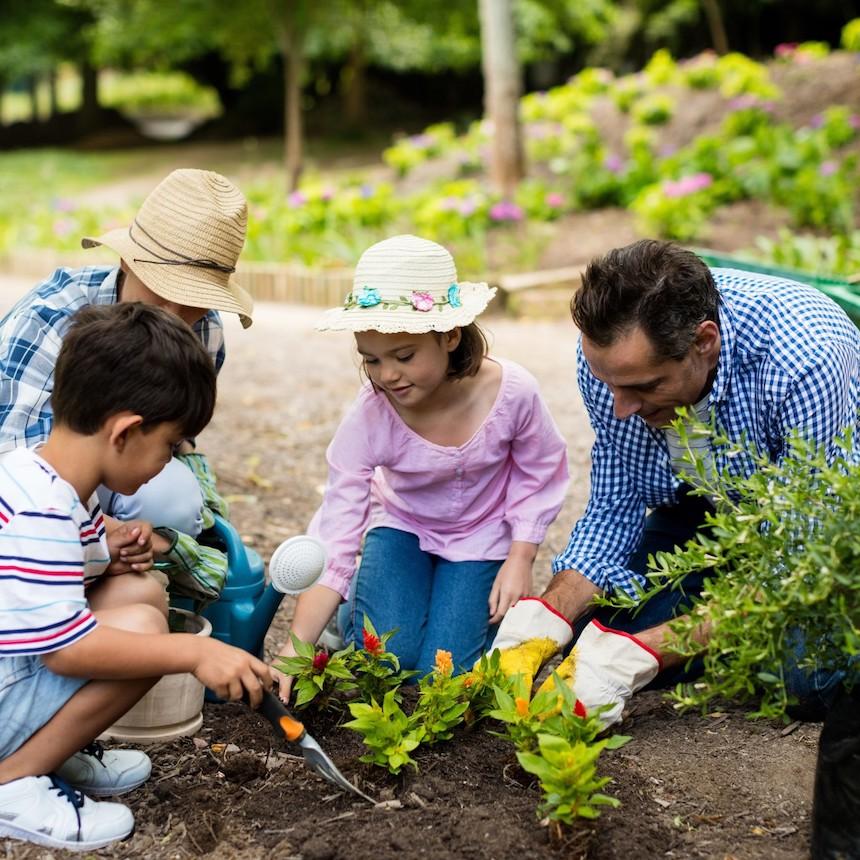Gardening Tips for Captivating Pollinators and Enhancing Biodiversity
Gardening Tips for Captivating Pollinators and Enhancing Biodiversity
Blog Article
Specialist Gardening Tips for Developing a Sustainable and Eco-Friendly Yard
Beginning on the trip to develop a lasting and eco-friendly garden involves a series of intentional selections and techniques that not just improve the appeal of your space yet likewise add favorably to the environment. To reveal even more expert insights and useful strategies, allow us discover the vital elements that specify an ecologically aware garden.
Pick Indigenous Plants
Selecting native plants for your yard is an essential step towards accomplishing sustainability. Furthermore, native plants generally need much less water once developed, adding to much more efficient water use.
Beyond their sensible benefits, native plants play an essential role in supporting neighborhood biodiversity. They give necessary environment and food sources for native wildlife, consisting of pollinators such as birds, bees, and butterflies. This cultivates a well balanced environment, which is crucial for the health of your garden and the surrounding atmosphere.

Implement Water Conservation
Implementing water preservation strategies is important for preserving a sustainable garden. Effective water usage not only lowers the environmental influence yet additionally makes certain that plants obtain ample hydration without wastefulness.
On top of that, mulching is a useful method for saving water. By applying a layer of organic compost, such as timber chips or straw, around the base of plants, garden enthusiasts can lessen soil evaporation and maintain regular wetness levels. Mulch also aids control soil temperature and suppresses weed development, additional contributing to plant health.
Rainwater harvesting is an additional sustainable strategy. Installing rainfall barrels or various other collection systems enables gardeners to capture and save rainwater, which can later on be utilized during completely dry durations. This not only preserves metropolitan water however likewise provides an all-natural, chemical-free source for irrigation.
Last but not least, choosing drought-tolerant plant species can significantly lower water needs. These plants are adjusted to flourish in low-water conditions, making them perfect for eco-friendly gardens. gardening tips. Executing these water conservation techniques will foster a resilient, lasting garden
Usage Organic Gardening Approaches

Pest management in a natural yard relies upon integrated pest administration (IPM) methods. These consist of motivating valuable pests, making use of all-natural killers like ladybugs and lacewings, and implementing crop rotation to disrupt pest life process. Friend Visit This Link planting, where certain plants are grown with each other to push back pests or attract useful pests, is an additional reliable technique.
Weed control is managed with mulching and hands-on elimination, instead than relying upon herbicides. Compost not just suppresses weeds but likewise preserves dampness and boosts dirt wellness as it breaks down. Organic composts, such as straw, timber chips, and leaves, are specifically beneficial.
Create Wild Animals Environments
Creating wild animals habitats within your yard not only improves biodiversity but additionally sustains the community's equilibrium. Start by including native plants, as these are appropriate to your local climate and give vital food and sanctuary for wildlife.
Take into consideration including a water attribute, such as a pond or birdbath, to supply a consistent water source. Water elements attract a range of species, from amphibians to pollinators, improving the yard's vigor. Additionally, mounting birdhouses, bat boxes, and insect hotels provides secure nesting websites and urges biodiversity.
Leave some areas of your yard undisturbed, enabling leaf trash and dropped branches to gather. By focusing on these lasting techniques, your garden can come to be a refuge for neighborhood wild animals, advertising ecological health and sustainability.
Technique Composting and Mulching
A key aspect of lasting gardening, composting and mulching, substantially enhances dirt health and wellness and decreases waste. Composting entails recycling organic materials such as kitchen scraps, turf cuttings, and leaves. These products decay to create nutrient-rich compost, which acts as a natural fertilizer. Unlike artificial fertilizers, compost enhances the soil with helpful microorganisms and important nutrients, cultivating a healthier garden community.
Mulching, on the other hand, entails covering the dirt surface area with not natural or natural materials, such as straw, wood chips, or shredded leaves. This method supplies numerous advantages: it preserves soil wetness, suppresses weed growth, and moderates soil temperature. Mulch additionally gradually breaks down, adding raw material to the dirt and more enhancing its fertility.
To exercise efficient composting, ensure her response your compost heap has an equilibrium of environment-friendly materials (rich in nitrogen) and brownish materials (abundant in carbon), preserving sufficient aeration and wetness. gardening tips. Frequently transforming the stack speeds up decay. For mulching, use a 2-3 inch layer around plants, ensuring it does not straight contact stems or trunks to avoid rot
Conclusion

Choosing indigenous plants for your yard is a basic step toward attaining sustainability.In addition, including native plants can improve the aesthetic allure of your garden. These plants are adapted to flourish in low-water problems, making them perfect for eco-friendly gardens. Carrying out these water preservation techniques will foster a resistant, sustainable garden.
In final thought, establishing a eco-friendly and sustainable garden entails the strategic choice of indigenous plants, the adoption of water conservation strategies, and the implementation of organic gardening approaches.
Report this page